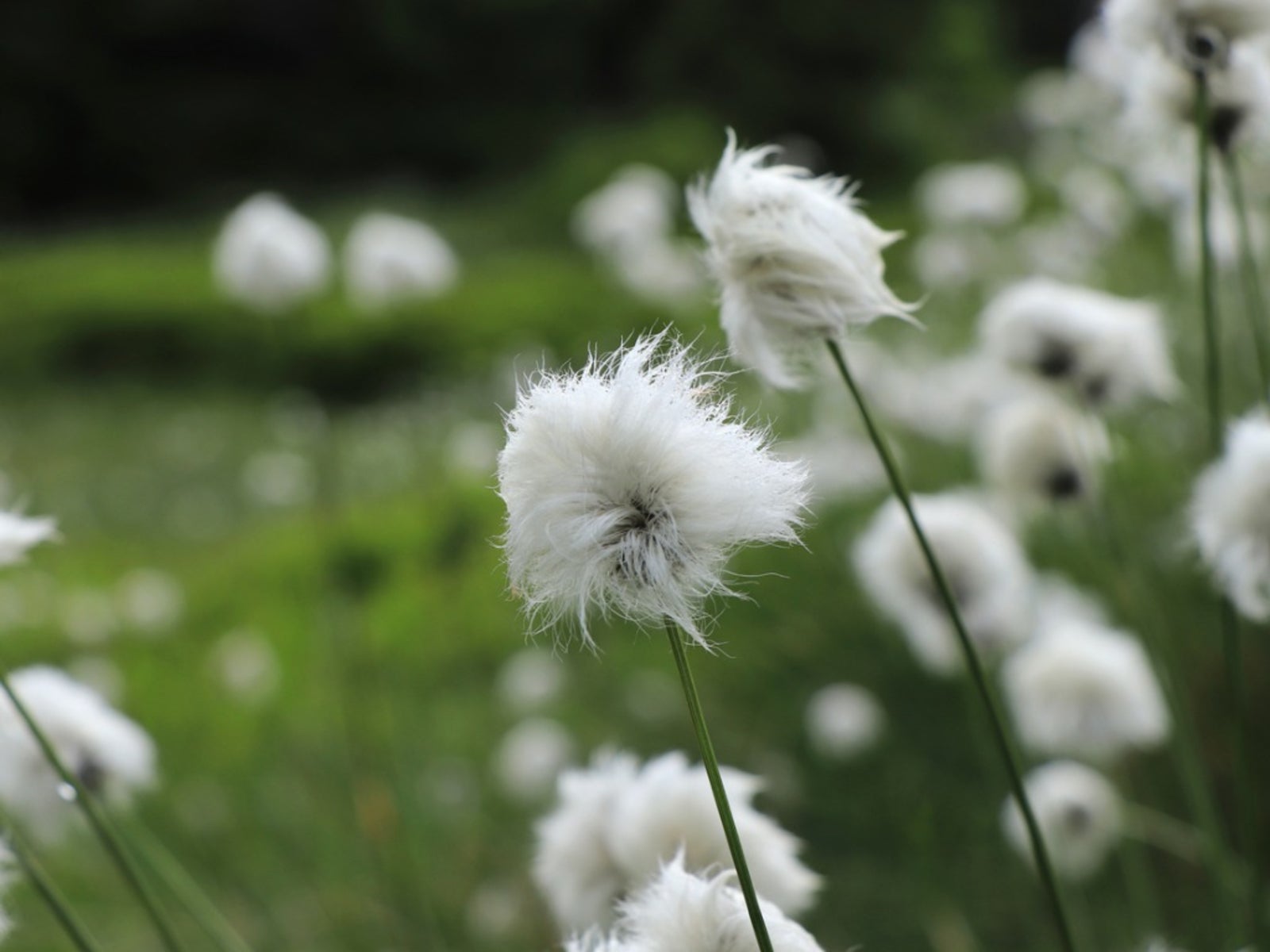Cotton Grass Info - Facts About Cotton Grass In The Landscape


The whisper of grass swaying against itself in the wind may not be as intoxicating as the pitter patter of little feet, but it surely comes close. The peaceful movement of an expanse of wooly cotton grass is both soothing and mesmerizing. Eriophorum cotton grass is a member of the sedge family that is native to arctic and temperate zones of Europe and North America. It makes and elegant addition to the landscape in moist acidic soils.
Cotton Grass Info
Common cotton grass is widespread across Europe, Siberia and many other wetland and boggy habitats. It is a wild plant that colonizes cranberry bogs, marshes and other moist areas. Considered a weed in some agricultural sites, it is able to reproduce by its prolific airy cotton grass seeds or by roots. Get informed with the facts about cotton grass so you can see if it is right for your gardening needs. Eriophorum cotton grass can grow up to 12 inches in height. It is a slender creeping grass with flat leaf blades that bear rough margins. The plant is riparian and can even grow in up to 2 inches of water. Flowers are at the terminal ends of stalks and appear as fluffy balls of cotton - hence the common name. They are either white or coppery and have slender bristles. The genus name comes from the Greek work “erion” which means wool and “phoros” which means bearing. Cotton grass seeds are long and narrow, approximately 3 times as long as wide, and either brown or copper in color. Each seed bears numerous white bristles that catch the wind and help the seed adhere to favorable germination ground. The bristles are actually the modified sepals and petals of tiny flowers.
Facts About Cotton Grass Growing
Common cotton grass prefers moist soil with high acidity. Common cotton grass will grow well in loam, sand or even clay soils. However, it thrives in peaty soil and boggy locations and is a good choice for growing around a water feature or pond. Just be careful to cut the blooms off before seeds mature or you might have patches of the sedge in every moist nook of your landscape. Another bit of interesting cotton grass info is its ability to grow in water. Place the plants in a 1-gallon pot with 3 inches of water. The plant needs little extra nutrition in boggy soil but in container situations, feed once per month with a diluted plant food during the growing season. Elsewhere cotton grass needs a full sun site with plenty of water, as the soil must be kept consistently wet. Choose a south- or west-facing exposure for best lighting. Some shelter from battering winds is a good idea to keep the plant from getting shredded and ruining the appearance. Leaf blades will change color in autumn but remain persistent. Divide the plant in spring every few years to prevent the center clump from dying out.
Sign up for the Gardening Know How newsletter today and receive a free copy of our e-book "How to Grow Delicious Tomatoes".

Bonnie Grant is a professional landscaper with a Certification in Urban Gardening. She has been gardening and writing for 15 years. A former professional chef, she has a passion for edible landscaping.